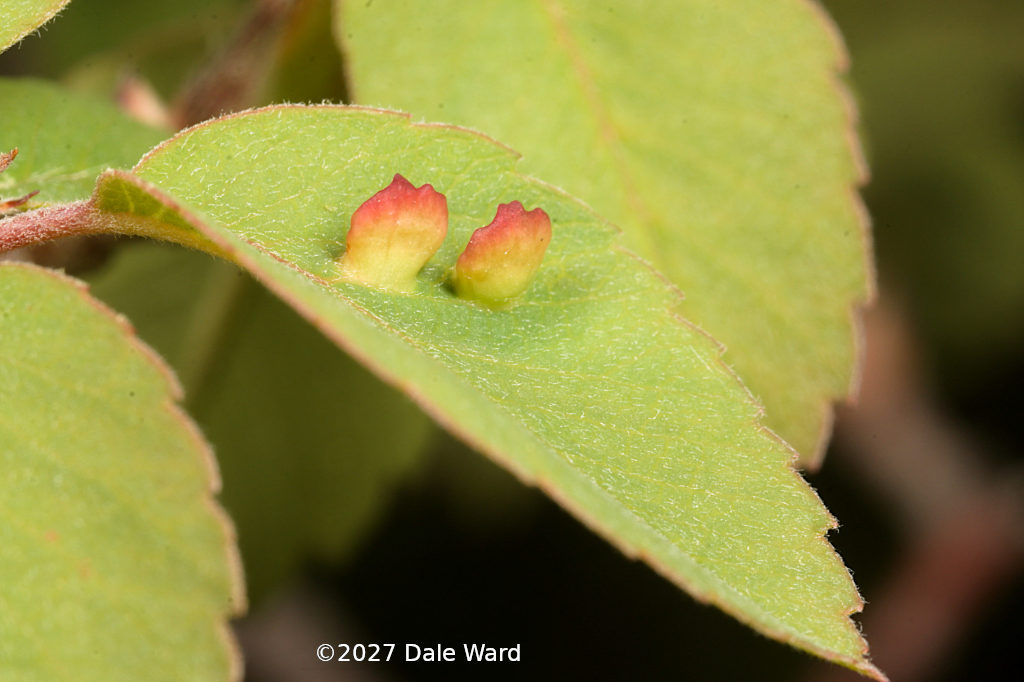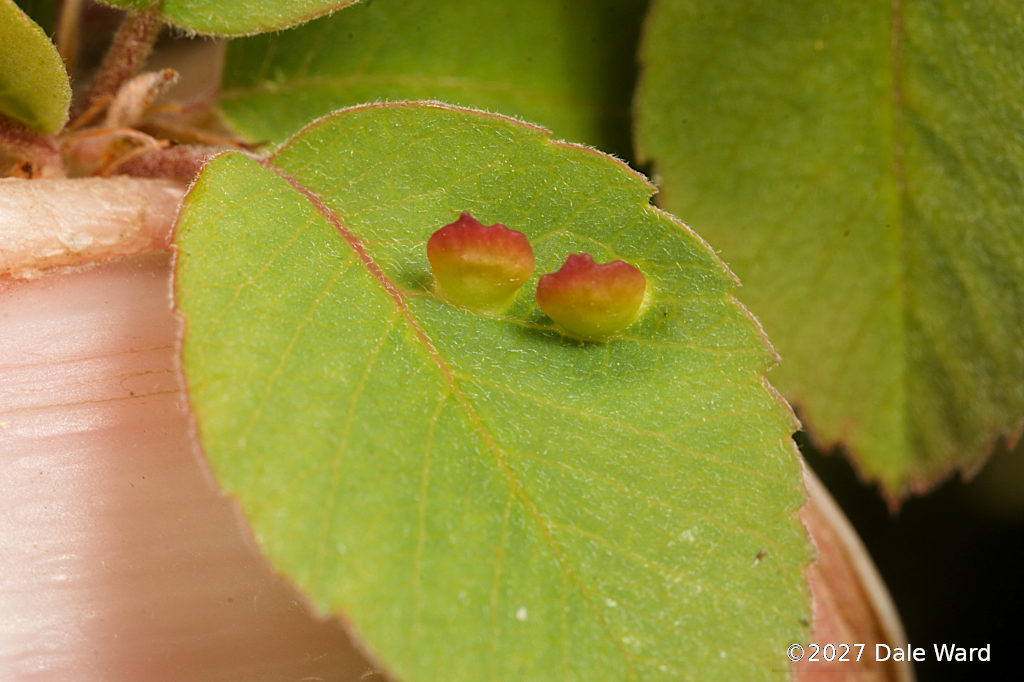Blaesodiplosis Galls on Serviceberry (Amelanchier)
Looking at strange growths on Serviceberry leaves in southwestern Colorado
 Two _Blaesodiplosis_ galls on Serviceberry (_Ameleanchier_).
Two _Blaesodiplosis_ galls on Serviceberry (_Ameleanchier_).
When I was out at Sage Hen (Montezuma County, Colorado, roughly 6300’) a couple days ago, I was admiring the blooms on the Serviceberry bushes (Amelanchier sp). They’re quite spectacular right now.
Then I noticed some funny red tabs on some of the Serviceberry leaves.
Hmm. These looked like galls - ‘houses’ made from plant tissue that some creature has convinced the Serviceberry to build for them.
The galls were flat tabs projecting up from the upper surface of the leaf. They were small, perhaps 1 centimeter or so in width. The galls were emerging from one of the leaf veins. On the other side of the leaf (not pictured), the leaf had a small disc of leaf tissue that was discolored a yellowish-brown.
 Same two _Blaesodiplosis_ galls on Serviceberry (Ameleanchier), this time with my fingertip included for scale.
Same two _Blaesodiplosis_ galls on Serviceberry (Ameleanchier), this time with my fingertip included for scale.
As far as I can tell (using my new favorite book, by Russo (2021)), these are galls created by one of the Midges in the genus Blaesodiplosis.
Russo (2021) says: “For reasons not well understood, service-berry has become host to an array of related gall midges whose taxonomy is challenging.”
Well, that’s all the encouragement that I need to say “It’s likely some species of Blaesodiplosis” and leave it at that.
I’ve had very little luck in finding out more about the biology and life cycle of Blaesodiplosis, which is a pity. I wish I knew more about them.
But one thing I do know: their galls sure are pretty.
Sources:
Russo, Ronald A. 2021. Plant Galls of the Western United States (Princeton Field Guides, 142). Princeton University Press. ISBN-10: 0691205760.
Bugguide.net also has some good photos that helped confirm my ID on their Blaesodiplosis page page. This page was especially useful in confirming the identification since my galls didn’t quite match what Russo (2021) describes as a “Tooth Gall”. Also, Russo’s description of his “Tooth Gall” mentions that the galls occur between the leaf veins, not on them, as these ones do.